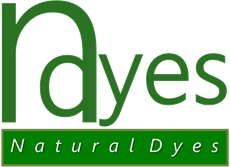Natural Dyes Terms
Abrasion Fastness: Resistance to abrasion of the color.
Angora Fibre: Refers to the downy coat produced by the Angora rabbit. While their names are similar, Angora fibre is distinct from mohair, which comes from the Angora goat.
Anthocyanin: A colorant in red and purple plants. It is a very strong antioxidant effect on the substances it contains.
Anthraquinone: One of the main ingredients of many dyestuff and pigment groups. Red color natural dyestuffs fall into this class.
Antibacterial: Substances that inhibit bacterial growth.
Antifungal: Substances that inhibit fungal infection.
Antioxidant: Substances that prevent oxidation and formation of free radicals.
Cotton Fiber: Cotton is a soft, fluffy staple fiber that grows in a boll, or protective case, around the seeds of the cotton plants of the genus Gossypium in the mallow family Malvaceae. The fiber is almost pure cellulose.
Fastness: The durability of the product against the effects it will be exposed to. Resistance to product exposure.
Fiber : Textile fibres can be created from many natural sources (animal hair or fur, insect cocoons as with silk worm cocoons), as well as semisynthetic methods that use naturally occurring polymers, and synthetic methods that use polymer-based materials, and even minerals such as metals to make foils and wires.
Flavonoid: compounds with antioxidant properties that give plants a bright color such as yellow, orange and red. Natural yellow colouring compounds are in this group.
Gallotannin: Complex polymeric tannins.
Indigoid: The main substance of the dye and pigment class that gives blue color. Blue color dyestuff used in denim fabrics.
Light Fastness: Light resistance of the color.
Linen Fiber: Flax is also called Linen. The fibre is obtained from the stalk of a plant (Linum usitatissimum).
Manmade Fiber: It is also known as Manufactured fiber. Synthetic or man-made fibers generally come from synthetic materials such as petrochemicals. But some types of synthetic fibers are manufactured from natural cellulose; including rayon, modal, and the more recently developed Lyocell.
Mohair Fiber: Shiny, long and soft fiber of animal origin obtained from hair of Ankara goat.
Natural Fibers: Natural fibers include those produced by plants, animals, and geological processes. They are biodegradable over time. They can be classified according to their origin.
Pigment: Natural or artificial substance insoluble in water or organic solvents.
Plant Extraction: Separation of dyes or extract with water or organic solvents from a plant.
Silk Fiber: Silk is a natural protein fiber, some forms of which can be woven into textiles. The protein fiber of silk is composed mainly of fibroin and is produced by certain insect larvae to form cocoons.
Tannin: High-molecular natural dyestuffs contained in many plants.
Wash Fastness: Resistance to washing of the color.
Wool Fiber: Wool is the textile fiber obtained from sheep and other animals, including cashmere and mohair from goats, qiviut from muskoxen, angora from rabbits, and other types of wool from camelids.
